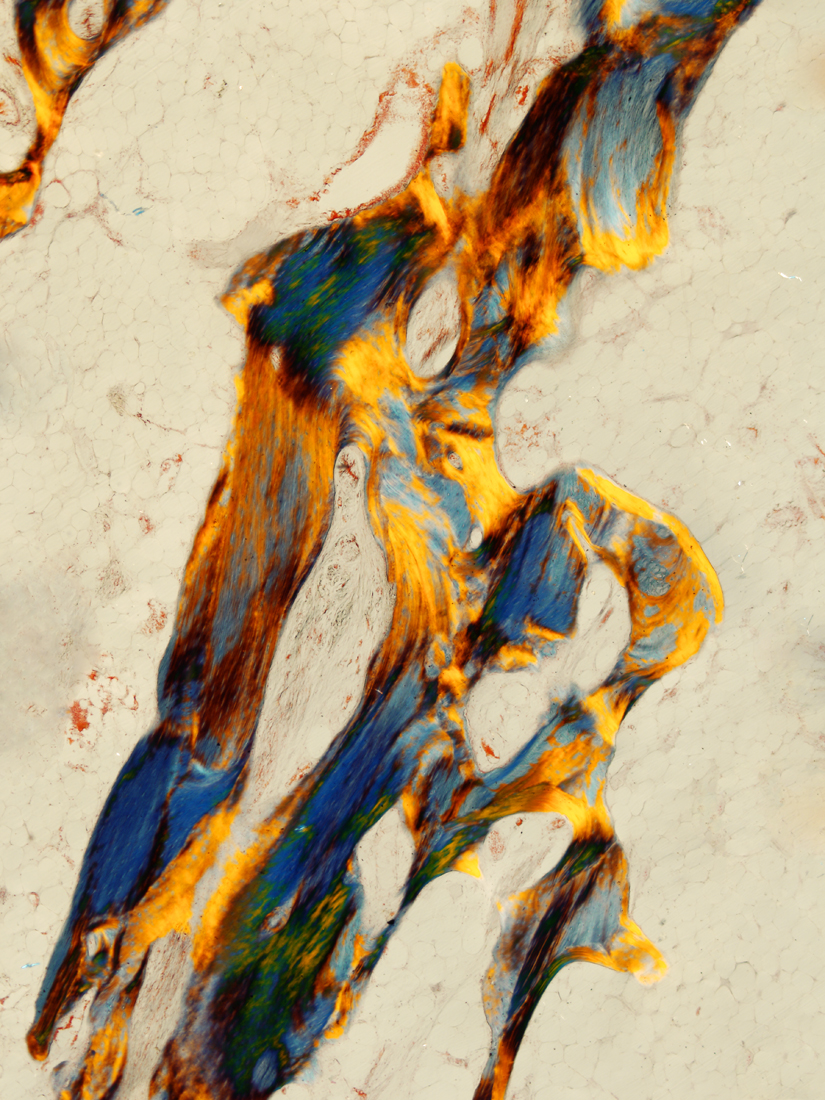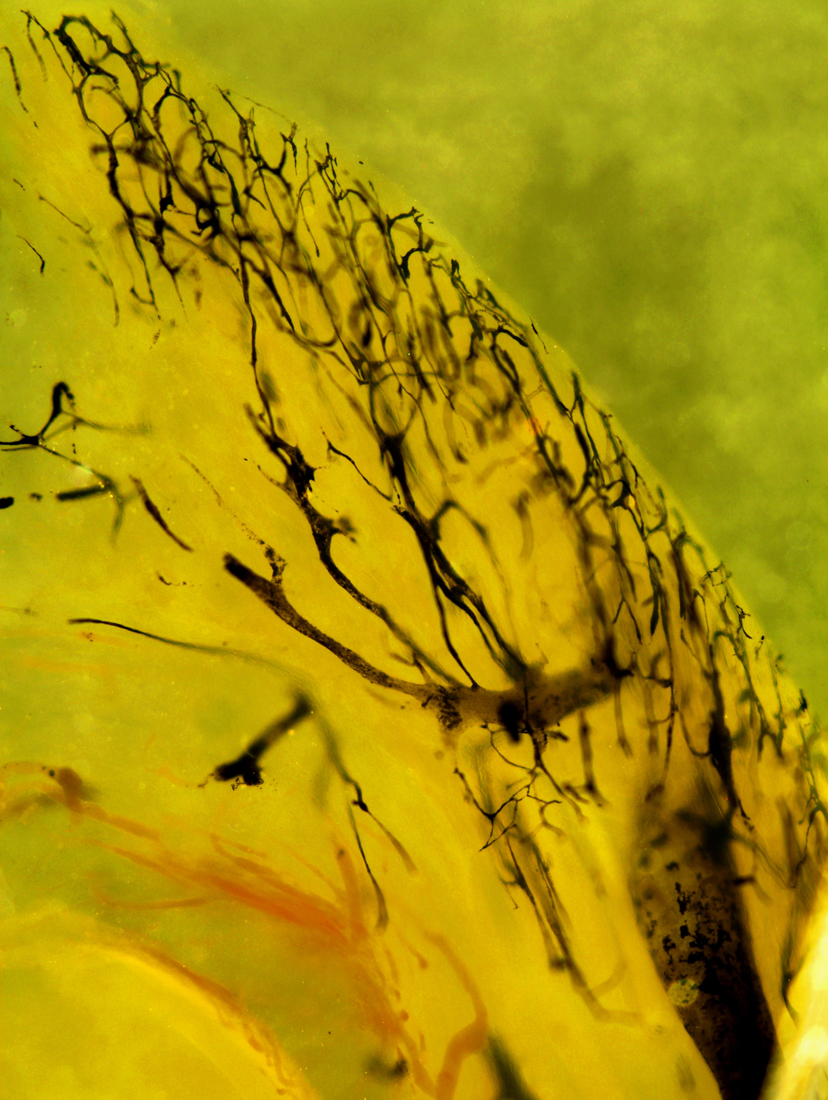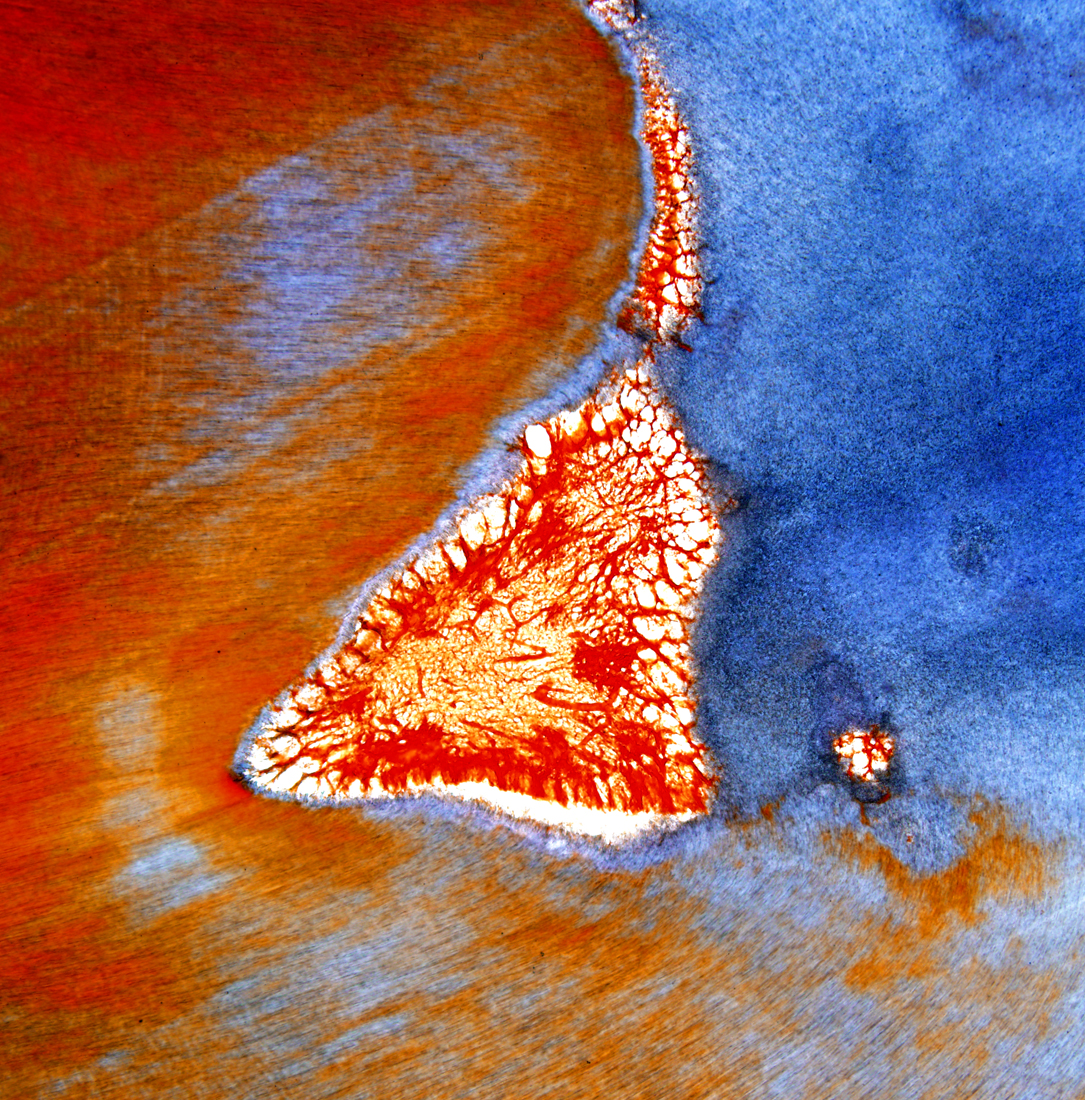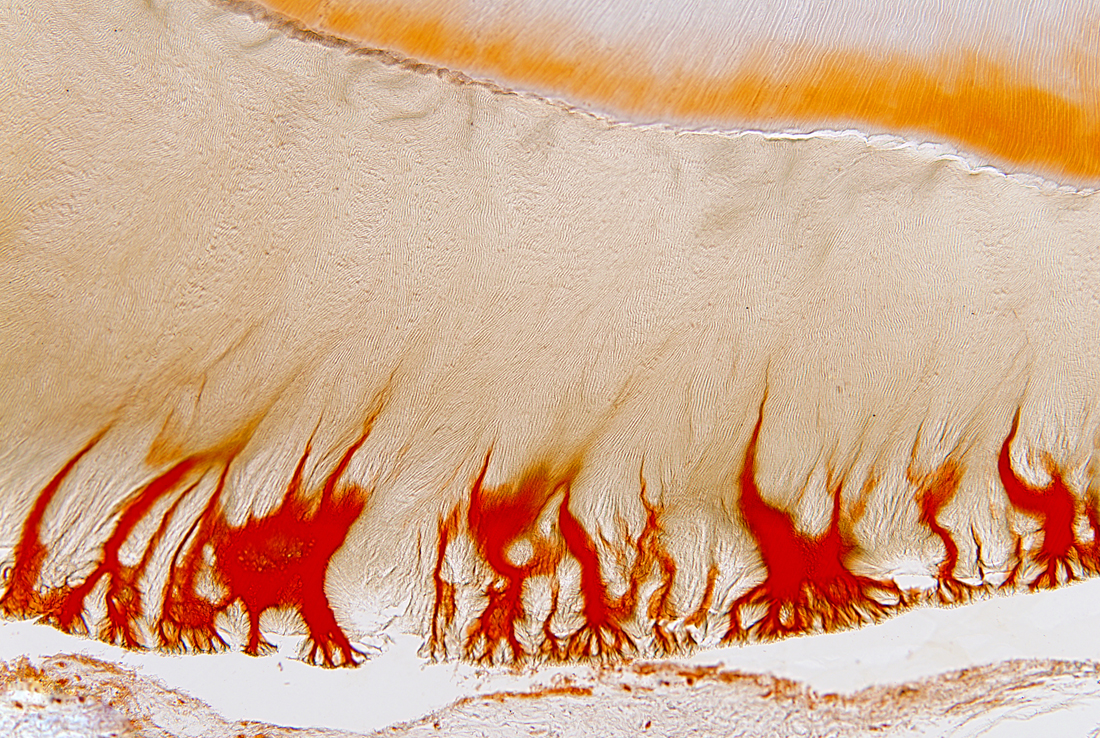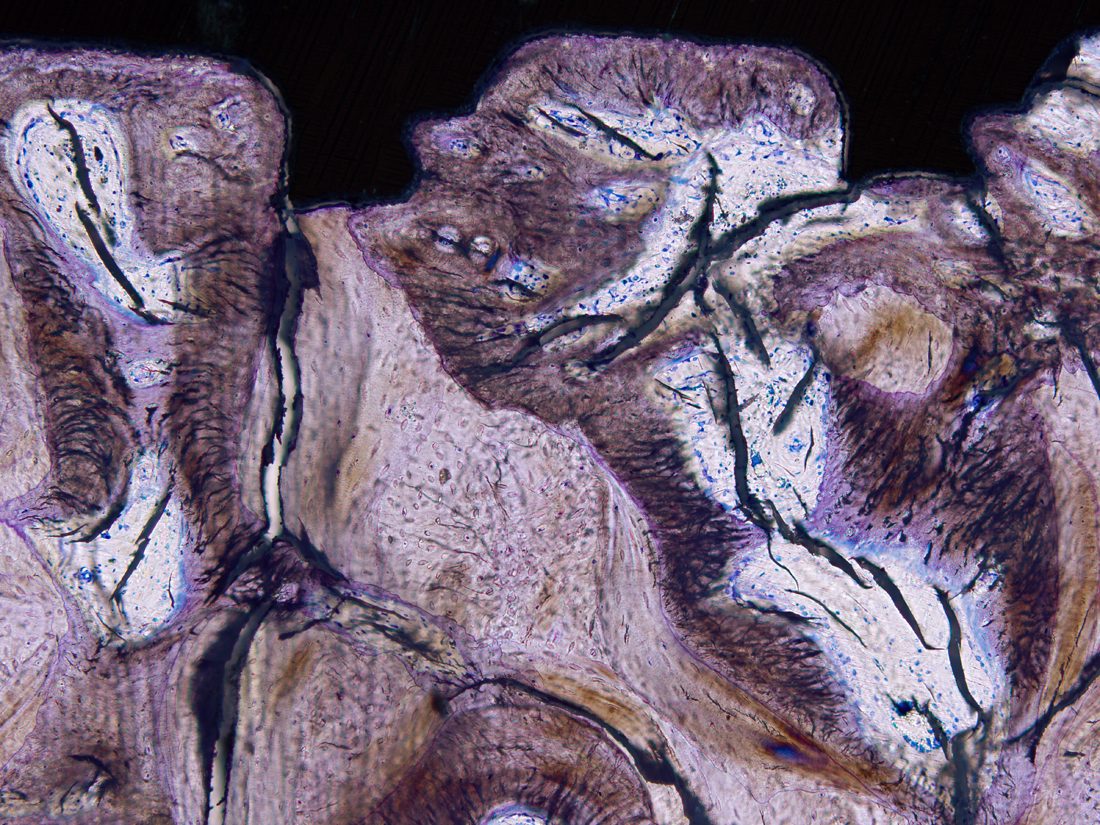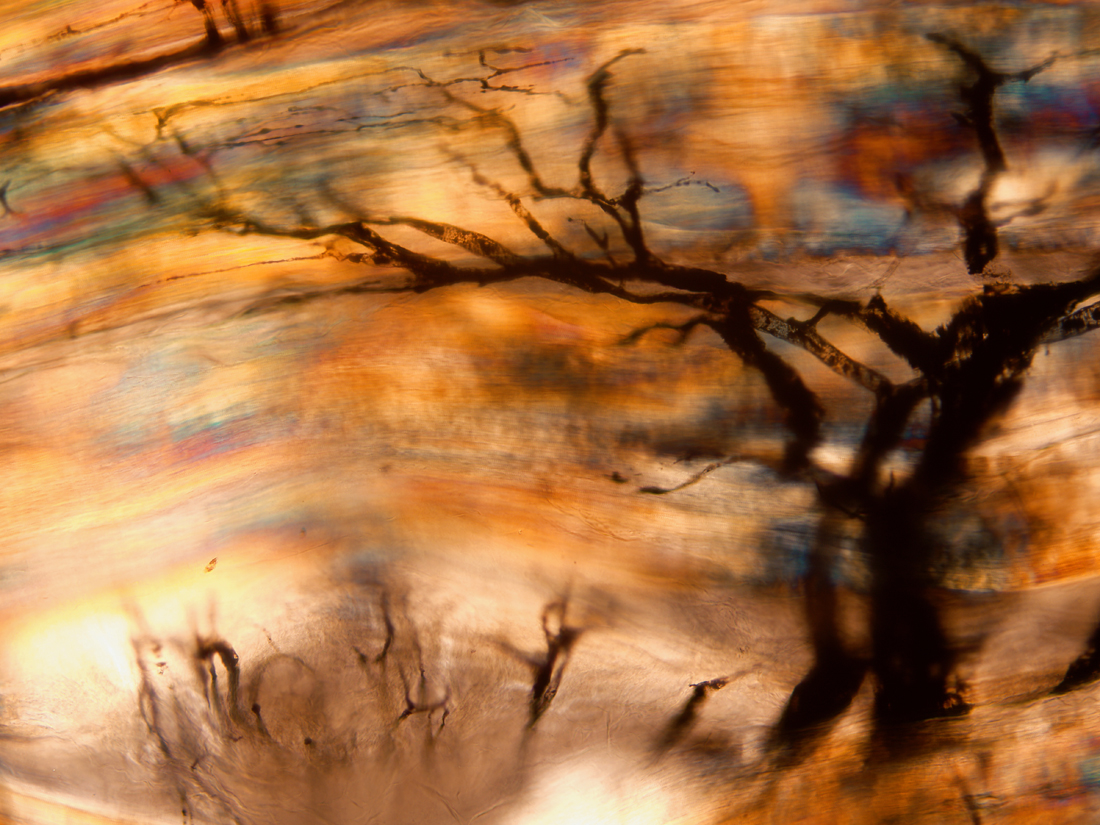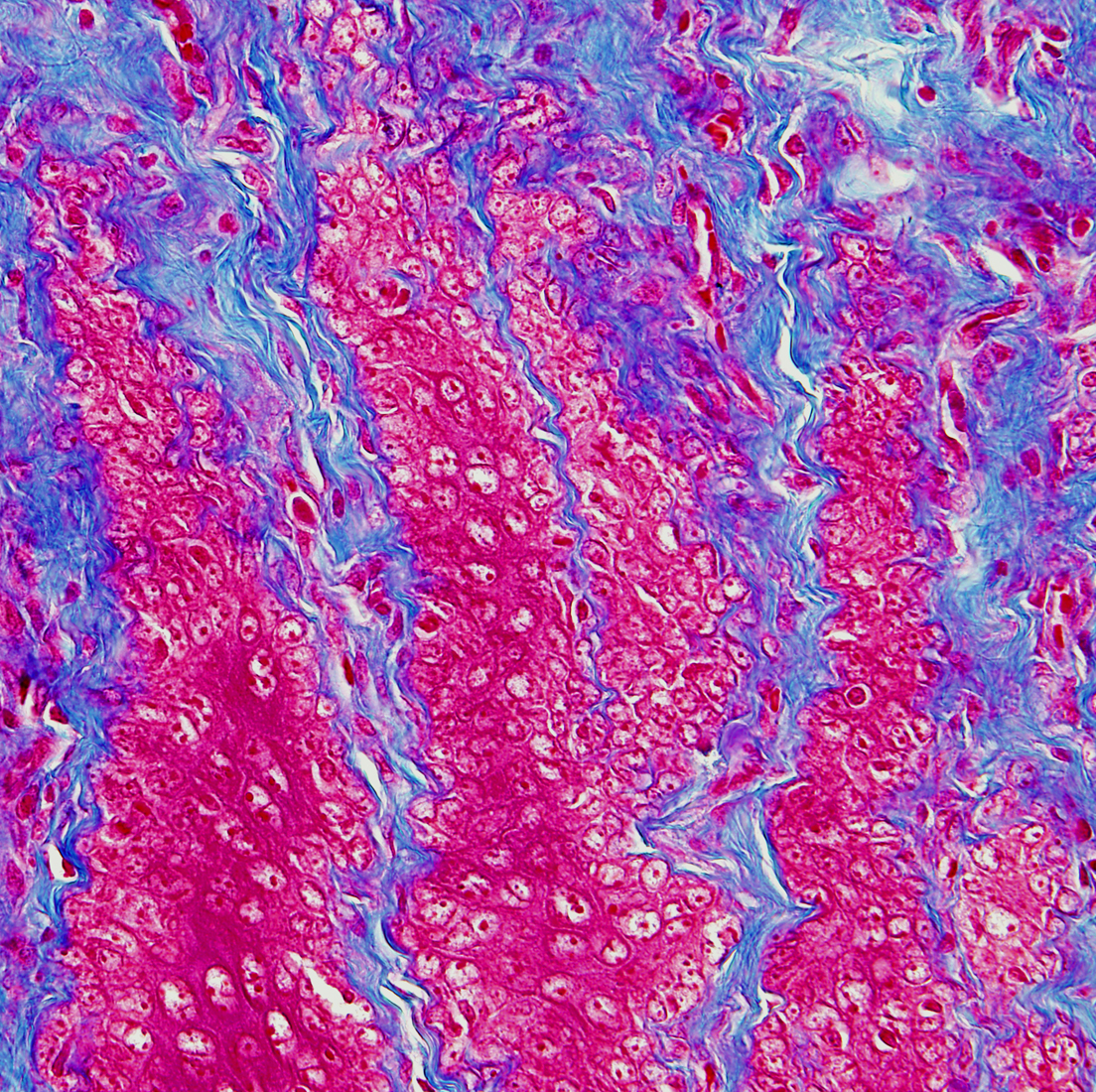前言
展现在大家面前的这些美轮美奂的摄影作品出自北京大学口腔医院病理学教授李铁军老师之手,取自他的显微摄影集《生命之美》。她展现给我们的是一个神秘、神奇、神圣的生命之域,一块人迹罕至的“优诗美地”,一方技术视野之外的美学厚土,一片人神交感的精神高原。取材、空间虽然被严格限定,审美思绪却无限逸放。在这里,自然之灵秀,水墨之韵致,风骨之傲然交相辉映。在这里,界,无界;形,无形;象,无象,在这里,思,无痕,语,无声;悟,无穷;境,如仙。于方寸中见闳阔,有如太空之雄壮,银河之幽玄;于平实中见奇峻,直感叹造物主的巧夺天工,恻隐、敬畏,悲悯之心油然而生。在这里,人们会心与神游,抵近灵性的境域,赢得一种通灵达悟的神秘快感,一份与神(生命之神)对话的清新与豁然。
在技术主义坚硬的学科藩篱里,铁军老师呕心呈现的唯美主义摄影作品无疑是“节外生枝”,甚至是“红杏出墙”。人们会担心他那双孜孜寻美的眼睛,还能坦然回复到求真务实的职业价值轨道上来吗?求真与寻美,果真形似水火吗?
无疑,医学很长一段时间里都是一门伟大的手艺,医术的极致本是身体的艺术。直至20世纪初,奥斯勒还声称“医学是不确定的科学与可能性的艺术”。医学(技术)与艺术的对话,可以互相汲取生命的感悟、培育生命的灵感与技术的创造力,更高的境界是医生在艺术上登堂入室,径直闯入艺术的价值殿堂,去尝试艺术化生存的人生境界。因为艺术秉持人文主义的价值观(超越功利,追求相遇)与生命境界(利他主义的胸襟与格局),超越当下被技术主义、消费主义扭曲的狭隘价值追求(过分胶着于利害与得失),艺术让医生对痛苦、死亡的理解、领悟更加深刻,不仅仅只是躯体的病变与恶化,而是对待生命的姿态,爱的秩序,价值的位序,引领医者去感知“厚道”,逼近崇高,抵达神圣。
在技术主义坚硬的学科藩篱里,铁军老师呕心呈现的唯美主义摄影作品无疑是“节外生枝”,甚至是“红杏出墙”。人们会担心他那双孜孜寻美的眼睛,还能坦然回复到求真务实的职业价值轨道上来吗?求真与寻美,果真形似水火吗?
无疑,医学很长一段时间里都是一门伟大的手艺,医术的极致本是身体的艺术。直至20世纪初,奥斯勒还声称“医学是不确定的科学与可能性的艺术”。医学(技术)与艺术的对话,可以互相汲取生命的感悟、培育生命的灵感与技术的创造力,更高的境界是医生在艺术上登堂入室,径直闯入艺术的价值殿堂,去尝试艺术化生存的人生境界。因为艺术秉持人文主义的价值观(超越功利,追求相遇)与生命境界(利他主义的胸襟与格局),超越当下被技术主义、消费主义扭曲的狭隘价值追求(过分胶着于利害与得失),艺术让医生对痛苦、死亡的理解、领悟更加深刻,不仅仅只是躯体的病变与恶化,而是对待生命的姿态,爱的秩序,价值的位序,引领医者去感知“厚道”,逼近崇高,抵达神圣。
Prologue
The photos you are going to see are selected from Beauty of Life, an album of micrographic photography. The photographer, Dr. Li Tiejun, is a professor of oral pathology at Peking University School of Stomatology. In this exhibition, Prof. Li will take you through the mists of technology to a little-traveled land of life—a mysterious and magical world where God reveals himself. You will find in these photos beauty that breaks free from the frames and tranquility that is only found in traditional Chinese paintings. Such beauty and tranquility knows no limits and assumes no shapes. Before long, you will find yourself in a transcendent state where the self-consciousness melts away and so does the need to express. This is one of the moments when you get a glimpse of the truth, just like “a world in a grain of sand and a heaven in a wild flower”. Standing in astonishment at the work of the Creator, you will have mixed feelings of sympathy, awe and compassion. This spiritual connection with God will inspire in you euphoria and illumination like you never had before.
The aesthetics-oriented approach that features in Prof. Li’s work is a departure from—and even a defiance of—the dominance of technological orientation in medical science. This makes one wonder if Prof. Li remains competent when he puts his camera down and gets his white coat on. Is aesthetic truth incompatible with scientific truth?
Not really. Medical science was de facto a craft for most of its history, and medical practice in its ultimate form is an art performed on the body. That’s why Sir William Osler claimed in the turn of the 20th century that “medicine is a science of uncertainty and an art of probability”. Exchange between art and medical science injects into each other new perspectives, inspiration and creativity. Yet doctors should not settle there; they should further their journey into the world of art by embracing its values and living their lives accordingly. The humanism and altruism that art holds may serve as a stronghold against values distorted by technological determinism and consumerism that attach too much to personal gains and losses. Art transforms doctors’ understanding of pain and death, enables them to see not only the pathological processes but life, love and value, and therefore lands them on a path that leads to character and divinity.
The aesthetics-oriented approach that features in Prof. Li’s work is a departure from—and even a defiance of—the dominance of technological orientation in medical science. This makes one wonder if Prof. Li remains competent when he puts his camera down and gets his white coat on. Is aesthetic truth incompatible with scientific truth?
Not really. Medical science was de facto a craft for most of its history, and medical practice in its ultimate form is an art performed on the body. That’s why Sir William Osler claimed in the turn of the 20th century that “medicine is a science of uncertainty and an art of probability”. Exchange between art and medical science injects into each other new perspectives, inspiration and creativity. Yet doctors should not settle there; they should further their journey into the world of art by embracing its values and living their lives accordingly. The humanism and altruism that art holds may serve as a stronghold against values distorted by technological determinism and consumerism that attach too much to personal gains and losses. Art transforms doctors’ understanding of pain and death, enables them to see not only the pathological processes but life, love and value, and therefore lands them on a path that leads to character and divinity.
